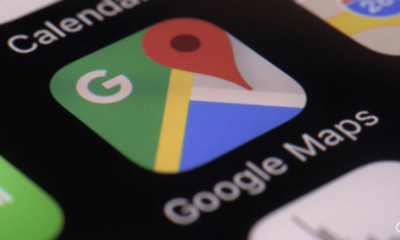Technology
Exploring the Benefits of Augmented Reality Features in Restaurant Apps

Introduction to Augmented Reality in Restaurant Apps
Augmented reality (AR) is revolutionizing the way we interact with our surroundings, and the restaurant industry is no exception. By overlaying digital information onto the real world, AR allows diners to engage with their dining experience in unprecedented ways. Imagine pointing your smartphone at a menu and instantly seeing 3D representations of dishes, complete with vibrant colors and mouth-watering animations. This technology not only enhances the visual appeal but also aids in decision-making, giving patrons a clearer idea of portion sizes and presentation. For businesses looking to stay ahead, partnering with a leading provider like https://celadonsoft.com/solutions/restaurant-app-development-company can bring these innovative features to life.
With AR finding its place increasingly in restaurant apps, they are making what conventionally has been a passive dining affair an even more active and immersive encounter. Diners can virtually tour restaurants or receive special tours guided through their devices, including bios on chefs and how ingredients are sourced. Such levels of engagement make diners associate themselves with the culinary art presented before them. The loyalty of customers can also be boosted through AR features offering personalized promotions and rewards. As technology continues to improve further, integrating augmented reality into restaurant applications promises to enhance experiences and not just make the dining experience a meal but rather a memorable journey.
Augmented Reality Technology Overview
AR technology merges the digital with the physical, augmenting our perception of reality by superimposing computer-generated images and information onto our real-world environments. This new technology enables immersive experiences through devices such as smartphones and tablets, making for a new and innovative user interaction. Using sensors, cameras, and sophisticated software algorithms, AR manages to present contextual information that enhances daily activities from navigation to entertainment.
AR revolutionizes the way customers interact with restaurants: They could view menu items in 3D, trace their origins, and even food nutrients-all before ordering. This level of interactivity not only raises engagement but also enhances the ability to make informed decisions, ultimately elevating the dining experience. The applications of AR in restaurant apps would make a huge difference in the way we interact with food and hospitality when the technology is at an evolutionary point, hence making the culinary journey more personalized and engaging. Augmented reality will alter this stance for restaurants and customers alike, since it is targeted at reducing this gulf between digital and physical experiences. By using this capability, augmented reality will revolutionize the world of dining by equipping both restaurants and customers with tools that make interactions weightier.
Enhancement of Customer Experience through Features of AR
Augmented reality changes the game for diners and their applications, creating an immersive experience far from the usual dine-in. Restaurants can add special AR features to their applications that will enable them to give users a rich preview of menu items, allowing each patron to view every meal in great detail before they make their choice. Just think about it: you point your smartphone at the table, and up pops a 3D rendering of the chef’s special, replete with colorful, tantalizing textures.
Moreover, AR can enhance the atmosphere in restaurants by engaging customers in interactive modes. For instance, it can allow customers to point their camera at the menu and see how animations pop up with the story behind each of their dishes or even show ingredients and nutrition in a fun, engaging way. This degree of interaction educates as well as entertains, making for a memorable dining experience-one that will bring consumers coming back for more.
Further, AR can let one conveniently navigate the restaurant. One will be able to locate their reserved table or other special offers with virtual markers showing them the way. Such a mix of utility and wonder not only serves to enhance customer satisfaction but builds relationships between diners and the restaurant, thereby enhancing loyalty in an increasingly competitive market.
AR Menu Visualization Advantages
Engaged Interaction: The customers can view their menu items in 3D before making orders, making those menu options interesting and interactive. This could lead to a higher level of arousal and excitement about dining. Indeed, it will facilitate informed decision-making where the customer has a clear view of portioning, ingredients, and presentation. This clarity will reduce confusion and dissatisfaction when the meal is served.
Dietary Considerations: AR can be used to bring forward any particular nutritional information or allergens that are linked with a specific dish. That way, guests can make choices based on their dietary requirements.
Cultural Context: For international restaurants, the use of AR could provide additional information on the origin of the dish or other interesting facts regarding its preparation. That makes it a learning experience and may add value to the dining experience.
AR Promotional Opportunities: This will be made possible when restaurants utilizing AR for special promotions present limited offers or seasonal specials in a manner that will pop and make customers order impulsively.
Improved Customer Interaction and Engagement
Next-generation restaurant apps are an upgrade in respect of new interactive features. It is an incredible outcome brought about by augmented reality in dining. Utilizing augmented reality allows restaurants to project a digital view of their dishes right in front of their customers before ordering. Imagine scanning a QR code on your table with your smartphone and-voilà: An instant 3D model of the chef’s special appears right off the screen, in vivid colors and popping textures. The immersive experience now catapults anticipation for dinner beyond just tantalizing the taste buds.
Moreover, AR can allow for gamification features, such as virtual scavenger hunts in the restaurant, which force customers to walk around the space in search of either promotions or dishes. This makes dinner much more interactive because people create a social atmosphere and a bonding effect during the meal.

Integrating customer reviews and testimonials using AR will further enhance trust and engagement. Diners see feedback in real time from previous customers, a layer of authenticity to their choices. Ultimately, augmented reality transforms passive dining into an engaging adventure; customers feel more involved and invested in their dining experience. This alone can foster much-needed loyalty and repeat visits.
Simplifying Ordering Processes with AR
Augmented Reality is going to continue changing how diners interact with restaurant apps, more specifically in ordering. Just think how great that will be: You sit at the table and can project a 3D model of that luscious dish right in front of you on your smartphone before ordering. This might just have a real sensory experience and better prepare customers for what they are getting themselves into, lowering buyer’s remorse.
While the navigation of menus is considered, augmented reality features can help in such a way that the user just needs to point his device toward a QR code or menu item to get detailed descriptions, ingredients, and even nutritional information. Such transparency empowers the diners as it caters to dietary restrictions and preferences, reducing time in reaching a decision.
More so, AR allows for real-time changes to orders. By interacting, diners can personalize meals visually by adjusting portion sizes or removing and adding ingredients, which could further enhance customer satisfaction by reducing errors in orders for a more efficient kitchen operation.
With restaurants increasingly embracing such novel technologies, the future of dining not only seems more interactive but is also strikingly smooth to pave the way toward a seamless and delightful customer experience.
Case Studies of Successful AR Implementations in Restaurants
Many restaurants find their way of effectively using AR to improve customer experience and make their operations smoother. Among these is the fast-casual chain Panera Bread. They’ve incorporated augmented reality features into their apps that allow customers to virtually see menu items before ordering. This immersive atmosphere will surely have customers being more confident in ordering and reducing food wastage by having diners select only meals that appeal most to them.
Another brilliant example is the AR pizza tracker developed by Domino’s Pizza: the customer is allowed to point his smartphone at a flat surface and see how his pizza is made, baked, and delivered by its virtual 3D picture. Such a feature fosters anticipation and excitement, therefore increasing customer loyalty and repeat orders.
Moving on to the more sophisticated settings, the Michelin-starred restaurant called The Fat Duck pioneered an augmented reality menu that brought dishes to life with interactive visual and narrative depictions. Using their smartphones to scan the menu, the diner could find out exactly how each dish was prepared and its inspiration, making for a memorable dining experience that went beyond just food.
These case studies illustrate how augmented reality can change the face of dine-out by making it more interactive and entertaining, which in turn can drive customer engagement and satisfaction.
Challenges and Considerations for AR Integration
AR features of restaurant apps are a particular set of challenges and considerations to make sure an implementation will work correctly. One key issue could be technological infrastructure: not every restaurant will have the capability or resources to develop, let alone maintain, complex AR applications. That could create inconsistent experiences for people going into an establishment that does have AR and another that doesn’t.
There’s also the aspect of user adoption: many could be leery of using AR since they are unfamiliar with it, or due to perceived privacy concerns. Helping to alleviate these fears through education on benefits and ease of use of AR is important. It is also important that the AR experience itself is intuitive and easily fitted into the app. An overcomplicated interface will only discourage its use, rather than enhance the dining experience.
Performance problems, such as lag or glitches, may also arise in conjunction with poor internet connectivity. All these technical issues must be resolved to retain consumers. Finally, AR content regularly needs updating and maintenance if it is to remain fresh and relevant-this demands a level of commitment from restaurant operators that may not always be consistent with their core business focus.
Future Trends in Augmented Reality for the Restaurant Industry
Interactive Menus: Patrons will be able to see what they are getting before they order. With their device aimed at the menu, up pops a 3D model of the dishes and all vital information, such as nutrition facts and origin of ingredients.
Tabletop Experiences: AR can turn the table into an interactive playground whereby the visitors could entertain themselves by playing some in-game toy, learning about the history of the restaurant, or even virtually following how a chef is preparing their meal.
Personalized suggestions involve AI in addition to AR, where apps will be able to analyze customer preferences and suggest a personalized meal option, making dining even more personalized. Virtual waiters: Through AR, one could summon a virtual server who can explain the menu, provide pairing suggestions, or even take an order directly through the app.
Improved Loyalty Programs: Through AR, restaurants could gamify loyalty programs, hence encouraging people to come back by offering them rewards for completing interactive challenges.
How AR Changes the Experience of Dining
Augmented reality makes dining more interactive; it lets customers see what they will have before ordering, hence making it easier to choose a particular dish based on its appearance and presentation. It provides an entertaining environment through games and challenges that involve the menu, hence calling for more visits. Also, AR analyzes customers’ consumption habits and offers recommendations on dishes and beverages, making the experience of a person utterly different. Customers will also be able to learn more about meal ingredients and their origins from immersive storytelling that builds up a dining journey. Unique AR features inspire patrons to share experiences in social media, creating organic marketing opportunities for restaurants.
Technology
Calls for European Supergrid Intensify Amid Energy Crises and Climate Pressures

As Europe battles growing climate extremes, energy instability, and geopolitical pressures, momentum is building around a decades-old concept: the European supergrid. The idea, once considered aspirational, is regaining urgency amid widespread power outages and rising reliance on renewable energy.
The European Union is set to install 89 gigawatts of new renewable energy capacity in 2025, a 10-gigawatt increase from the previous year, most of it driven by solar projects. This expansion is central to the EU’s 2030 climate targets, which aim to cut net greenhouse gas emissions by at least 55 percent from 1990 levels. Yet as renewable penetration grows, so too does the need for a more integrated, resilient power network.
Recent blackouts in Spain and Portugal highlighted vulnerabilities in the continent’s energy systems, prompting experts to revisit the supergrid concept. A pan-European high-voltage grid could allow electricity generated from wind in the north or solar in the south to flow seamlessly across borders, balancing supply and demand.
“A supergrid would allow green energy to flow across borders efficiently, balancing supply and demand; it could smooth out energy highs and lows, cut prices, boost resilience, and help Europe ditch fossil fuels faster,” said Michael Ashley Schulman, CIO at Running Point Capital Advisors.
France, Germany, the UK, and Italy are already developing “mini-supergrids” — multi-terminal high-voltage DC (HVDC) networks. Over time, these could be linked like a motorway system, gradually forming a broader supergrid. Offshore grids are also gaining traction as a cost- and carbon-efficient way to integrate large-scale wind energy.
But building a Europe-wide grid is no simple task. Regulatory fragmentation, complex permitting across countries, and local opposition have slowed progress. “Stitching together dozens of national grids isn’t just an engineering project; it’s a political minefield,” Schulman noted.
Beyond logistics, some warn that the supergrid must reflect more than economic efficiency. “A supergrid must serve ecological integrity, social equity, and energy democracy — not just corporate interests,” said Therese Guttmann of Vienna’s Institute for Ecological Economics.
Critics argue that decentralised solutions and local energy systems should develop in parallel to avoid replacing one form of centralisation with another. Others caution against cybersecurity risks and systemic fragility, warning that overconnectivity could make the entire continent vulnerable to disruptions.
The European Commission estimates that €584 billion in grid investment is needed by 2030 to meet energy transition targets. While the supergrid could play a major role, analysts agree it must be part of a broader mix of infrastructure improvements and decentralised technologies.
As the continent continues to navigate a fragile energy landscape, the supergrid remains both a tantalising vision — and a test of Europe’s ability to act collectively.
Technology
Renewable Energy in Heating and Cooling: Europe’s Uneven Progress
As Europe continues to focus on energy security, especially in light of Russia’s invasion of Ukraine, renewable energy has become a key component in diversifying energy sources. The share of renewables in Europe’s overall energy use has been steadily rising, but progress in the heating and cooling sector varies significantly across the continent.
In 2023, renewables accounted for 26.2% of the EU’s heating and cooling energy, closely mirroring the overall share of renewables in total energy consumption. However, this figure masks wide disparities between countries. While Iceland leads the way with an impressive 84% of its heating and cooling needs met by renewables, countries like Ireland report just 8%. Sweden and Estonia are also among the top performers with renewable heating shares of 67%.
Several factors explain these differences, according to Professor Pawel Oclon from Cracow University of Technology. Climate conditions, resource availability, and the state of energy infrastructure all play a role. Additionally, countries with established district heating systems, such as those in the Nordic and Baltic regions, have a smoother transition to decarbonized heating solutions. These systems allow for the easier replacement of large, centralized boilers with renewable alternatives like heat pumps or biomass boilers, rather than needing to replace individual boilers across many households.
The Nordic countries, excluding Norway, dominate Europe in renewable heating. Nations such as Sweden, Finland, and Denmark boast renewable heating shares well above the EU average. Norway, however, lags at 34%, though experts suggest that this figure underrepresents the country’s reliance on renewable electricity for heating, given its vast hydropower and wind resources.
In contrast, many Western European nations have made slower progress. Among the EU’s four largest economies, only France (30%) exceeded the EU average in renewable heating, while countries like Germany (17%), Spain (21%), and Italy (22%) fell behind. These nations have traditionally relied on individual gas boilers, which complicates the transition to renewable heating systems.
Austria stands out in Central Europe, with 39.4% of its heating needs met by renewables, largely due to its longstanding use of biomass in both individual and district heating systems.
Despite some progress, experts warn that the pace is insufficient to meet the EU’s 2030 target of 49% renewable energy in buildings. “The growth is notable, but it’s far too slow to reach the EU’s climate and energy goals,” said Rana Adib, executive director of REN21, a global network promoting renewable energy.
To accelerate progress, experts call for increased investment in research and development to improve technologies like heat pumps, solar thermal collectors, and energy storage systems. Additionally, stronger policy focus, including support for electric heat pumps, decarbonized district heating, and solar thermal systems, is critical.
As Europe continues to reduce its dependence on Russian gas, the transition to renewable heating remains an essential part of the EU’s energy strategy, helping to ensure a more secure and sustainable future.
Technology
Netflix Series Sparks Debate Over Social Media Ban for Children
The popular Netflix series Adolescence has ignited fresh discussions on the dangers of social media and smartphones for children, with some calling for a ban. However, experts caution that prohibiting social media use may not effectively address the root of the problem.
A recent survey by Amnesty International revealed that 73% of Gen Z social media users in the UK (aged 13-28) have encountered misogynistic content online, with half witnessing such material weekly. The findings coincide with heightened scrutiny on social media following Adolescence, which depicts the fictional murder of a schoolgirl by a 13-year-old boy influenced by social media.
The show’s co-creator, Jack Thorne, has urged the UK government to ban smartphones for children under 16, mirroring Australia’s recent move to restrict social media access for minors. Despite these calls, experts argue that banning social media is not a viable solution.
A study published in Lancet Regional Health Europe—the first of its kind—analyzed the impact of school-based smartphone bans across England. The research found no significant improvement in students’ mental well-being, sleep, or educational outcomes. While the study only covered school-time restrictions, it casts doubt on the effectiveness of outright prohibitions.
Drew Benvie, founder of the social media campaign group Raise, warns that delaying social media exposure until age 16 may be counterproductive. “What happens when a child is 15 years and 364 days old? They suddenly gain unrestricted access without prior education on its dangers,” Benvie told Euronews Next. He also noted that children often bypass bans using VPNs, as seen with attempts to block TikTok in the United States.
Misogynistic content remains a significant concern. According to the Amnesty International report, 57% of Gen Z men in the UK have consumed content from controversial figures like Elon Musk, former U.S. President Donald Trump, and Andrew Tate. Tate, a prominent online figure, has been criticized for spreading misogynistic views, yet his content continues to circulate on major platforms.
Social media companies have implemented measures to protect children. TikTok introduced a mindfulness tool for users under 16 that activates after 10 p.m., while Meta and other platforms have strengthened parental controls. However, experts argue these steps are insufficient, as algorithms continue to amplify harmful content. A study by University College London and the University of Kent found a fourfold increase in misogynistic content suggested by TikTok’s algorithm within five days of monitoring.
Experts suggest that rather than bans, comprehensive education on digital literacy, misogyny, and misinformation is crucial. Benvie stresses that parental involvement is also key. “Parents should use these apps themselves to understand them and engage in open discussions with their children about harmful content,” he said.
While education plays a critical role, Benvie insists that tech companies and regulators must take stronger action. “Banning social media outright is not a practical solution,” he said. “Instead, we need regulation, education, and enforcement to ensure a safer digital environment for children.”
-

 Business12 months ago
Business12 months agoSaudi Arabia’s Model for Sustainable Aviation Practices
-

 Business12 months ago
Business12 months agoRecent Developments in Small Business Taxes
-

 Politics12 months ago
Politics12 months agoWho was Ebrahim Raisi and his status in Iranian Politics?
-

 Business11 months ago
Business11 months agoCarrectly: Revolutionizing Car Care in Chicago
-

 Business11 months ago
Business11 months agoSaudi Arabia: Foreign Direct Investment Rises by 5.6% in Q1
-

 Technology12 months ago
Technology12 months agoComparing Apple Vision Pro and Meta Quest 3
-

 Politics12 months ago
Politics12 months agoIndonesia and Malaysia Call for Israel’s Compliance with ICJ Ruling on Gaza Offensive
-

 Sports10 months ago
Sports10 months agoKeely Hodgkinson Wins Britain’s First Athletics Gold at Paris Olympics in 800m






























